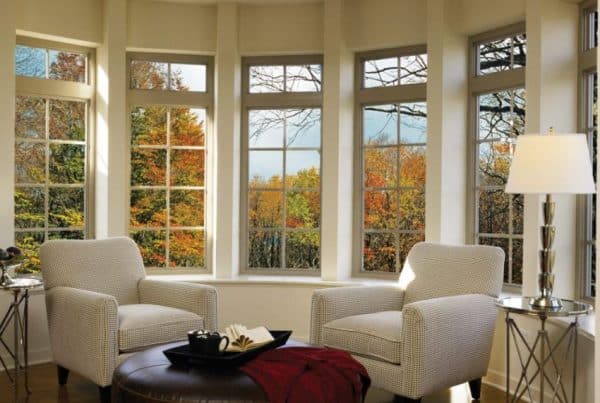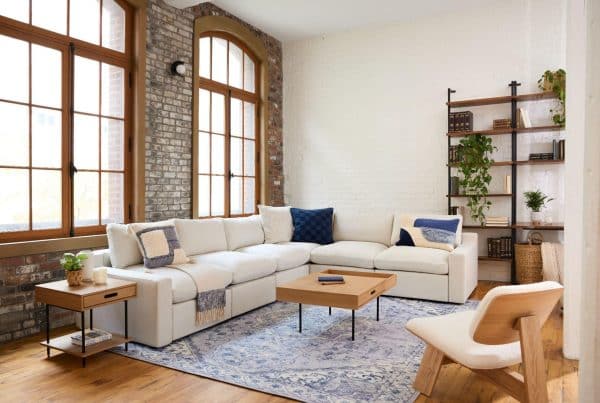
Living in New York City (NYC) small apartments necessitates some compromises, but one of them doesn’t have to be the decor. In NYC, not many people have the space they’d like to have, and designing a small area may be difficult. You need to make it practical but not claustrophobic, and you need to give it personality without making it appear chaotic or untidy.
Small-apartment decorating in New York is an art form in itself, necessitating ingenious storage solutions and multipurpose layouts. Studio apartment decoration ideas have been as popular as same-day flower delivery in New York City for a long time now – both are an everyday necessity.
Below are some small apartment design ideas to assist you in creating a living place that’s as stylish as it’s functional.
Storage
Storage is one of the most sought-after commodities in any home. Having limited storage space might create a cluttering and congestion problem. Effective space-saving techniques and an understanding of minimalist living are key. Becoming inventive with your storage is probably the most critical element. There are several methods to achieve this.
Wall Mounted and Hanging Decor
You can build up if you aren’t building out. You can apply this fundamental idea to interior design in any living area. Empty areas are valuable assets. Place a floating shelf towards the ceiling that runs the length of the space. Then decorate it with books, ornaments, or other collectibles.
Wall-mounted furniture, such as shelving, lights, side tables, or nightstands, provides useful storage or a convenient seat without taking up valuable floor space—Hang utensils above the stove with hooks or magnetic holders for quick access. Make the most of wasted space by installing poles across windows to hang crockery or plant decor.
You can also add hooks for hanging mugs underneath cabinets or mount our spice rack to keep the surfaces from looking cluttered.
Closets and Drawers
Closets are certainly a luxury in small apartments. Make your own cloakroom with hanging rods or free-standing clothing racks if you prefer the DIY (do-it-yourself) approach or need to decorate your NYC apartment on a budget. Consider putting cabinets on either side of a doorway and over entrances to maximize built-in space. In small New York apartments, sliding units are excellent.
Anything can be organized and stored in vertical pull-out drawers. You can have these installed by a contractor if your DIY skills aren’t that advanced— just remember to vet your contractor before letting them work on your home.
Layout
A clever floor design with thoughtful furniture placement is the secret to effectively living in a compact New York flat. Consider necessary furniture items ahead of time and creative methods to maximize space.
Raised Levels
Designing upwards is one approach to achieve this. Bedrooms on higher levels provide storage or open space below. A home office, bathroom, living room, or kitchen under a loft bedroom is popular.
Furniture
Living in a little apartment relies largely on furniture placement. One method to alleviate space issues is choosing furniture with two functions. You may use folding screens to separate bedrooms from living areas while also providing a place to display paintings or plants. Between the sofa and the kitchen, a thin console table serves as a separator and a handy place for a light or a preparation area for cooking.
Use a convertible table in your living/dining area that serves as a dining and coffee table. For side tables, place trays on ottomans, or mount low cabinets on casters to allow easy mobility of your TV console or study desk. These convertible solutions make living in a small flat simpler and increase your floor space.

Lighting
If you have a lot of natural light, make the most of it with translucent curtains and lots of mirrors. If your home lacks natural light, a combination of tiered lighting may make it feel open and bright. The use of wall-mounted lighting is a great example of how to make the most of your space. It not only provides an eye-catching decorative element to your room, but it also serves a practical purpose.
One of the most common mistakes individuals make in tiny rooms is not using available wall space for illumination. When space is limited in a living room, choose a larger, more comfortable sofa over the table and floor lamps, opting instead for the plug-in, wall-mounted, and hardwired sconces. There are so many lighting options available that you should have no problem combining your tastes with practicality to suit every room.
Finishes and Style
Wherever feasible, use mirrors or reflected items. Reflective surfaces help bounce more light across a room and make it feel larger. For compact rooms, lean towards modern furniture with a contemporary twist.
Minimalist materials, such as pre-finished oak flooring or sleek quartz worktops, give a tiny area a clean and calm appearance. Lay a carpet that is large enough to accommodate all of your room’s furnishings, and don’t be afraid to use bright colors and patterns. A geometric rug will ground the area and make it feel more welcoming.
Colors
It’s typical to choose bright or white hues while decorating tiny places. These provide the illusion of expansivity, which is simple to do with paint. It’s vital to avoid leaning too heavily on bright white since it may make a room appear chilly and unwelcoming.
Neutrals are a fantastic choice for tiny areas since they make them seem bright and spacious. Warm and rich white tones with a hint of grey, green, cream, or pink are fantastic alternatives for bringing warmth and texture to an area. The light is amplified in a modest apartment with white walls and wood floors, giving it an uplifting and airy effect.
Does this imply that you avoid using dark or aggressive colors altogether? Certainly not. A dark feature wall may make a small space appear larger. For tiny areas, You should use light colors for the bulk of the space. The idea is to pick the proper tone and avoid using dark colors on every wall.
Take Away
These small NYC apartment ideas can help you make the most of your space. You can combine any and all of the ideas given above to create a warm and homely apartment that looks and feels spacious while still being practical enough to hold everything you want and need in your home.







